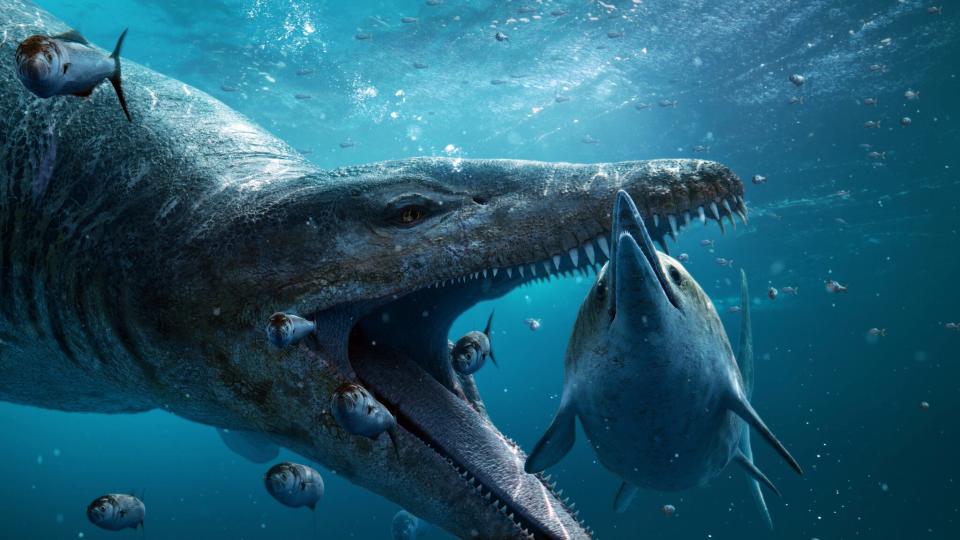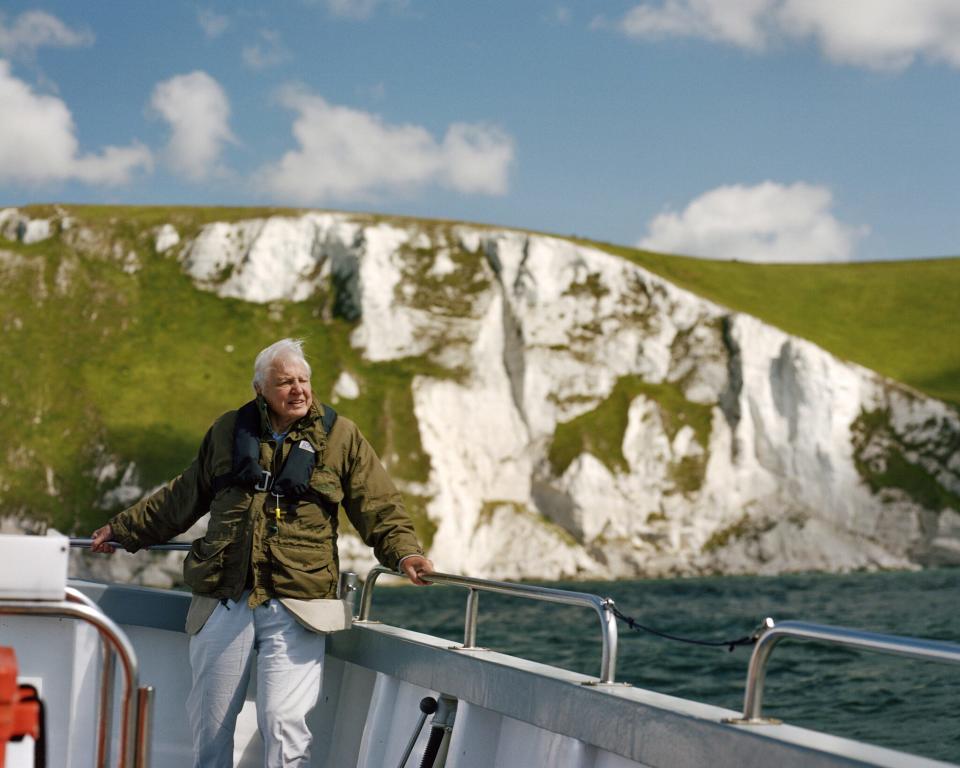Skull of pliosaur, massive prehistoric sea predator, is discovered in the UK
- Oops!Something went wrong.Please try again later.
- Oops!Something went wrong.Please try again later.
While dinosaurs ruled the land, the seas were long ago the territory of a mysterious aquatic monster more closely related to snakes and lizards.
The prehistoric predator known as a pliosaur dominated the seas millions of years ago, using its massive size and its row of razor-sharp teeth to tear into the flesh of it its prey.
Now, a team of fossil hunters say they recently unearthed the skull of one of these fearsome creatures that once terrorized the seas off the coast of Britain. The find was made in southwest England along part of the Jurassic coastline, a long stretch of the English Channel whose treacherous cliffs contain the fossilized remains of many ancient beasts, according to BBC.

The perilous mission to recover the pliosaur skull, which saw a team of climbers descend a cliff to excavate the fossil nearly 50 feet above the beach, will be documented in an upcoming BBC film hosted by David Attenborough.
Dinosaur extinction: New study suggests they were killed off by more than an asteroid
What are pliosaurs?
Fossils indicate that pliosaurs were active about 200 million to 65.5 million years ago during the the Jurassic and Cretaceous periods, according to Britannica.
Cousin to the long-necked plesiosaur, the carnivorous marine creatures were not dinosaurs, but reptiles with massive heads, powerful jaws and serrated teeth. Their tear-shaped bodies, which could grow up to 39 feet long, made them agile and quick as they tore through the water using their four flipper-like limbs.
Fossilized skull found in cliffs of Dorset along Jurassic coast

The recent discovery of one of these creature's skulls came quite by happenstance as fossil enthusiast Phil Jacobs walked along a beach near Kimmeridge Bay in the English county of Dorset.
Jacobs, a textile designer who has spent decades hunting for marine reptile fossils on the Jurassic coast, spotted the tip of the snout among the beach shingle and realized its significance. He contacted local collector Steve Etches, who assembled a team and hatched a plan to extract the rest of skull from the crumbling cliffs, according to BBC.
In the upcoming documentary, Attenborough will tell the story of how the team of paleontologists spent weeks dangling from ropes as they drilled and hammered into rock to recover the fossil. Etches told BBC that he believes the find to be one of the most complete Jurassic pliosaur skull ever found.
"It's one of the best fossils I've ever worked on," Etches told BBC News. "Worldwide, there's hardly any specimens ever found to that level of detail. And if they are, a lot of the bits are missing, whereas this, although it's slightly distorted, it's got every bone present."
'The ultimate killing machine'
Scientists have identified the find as a potentially completely new species of pliosaur that lived 150 million years ago.
The giant fossil was measured to be about seven feet long with a row of 130 long, sharp teeth that allowed it to kill its prey in a single bite, the BBC reported. Each tooth has fine ridges at the back to pierce its prey's flesh and then quickly extract its fangs, ready for another swift second attack.
Deemed by the BBC as the "ultimate killing machine," the predator hardly discriminated in what it hunted – feasting on the dolphin-like ichthyosaur, other reptiles like the plesiosaur, and even other pliosaurs.
"The animal would have been so massive that I think it would have been able to prey effectively on anything that was unfortunate enough to be in its space," Andre Rowe, a paleontologist at Bristol University, told BBC. "I have no doubt that this was sort of like an underwater T. Rex."
BBC's upcoming documentary will feature visual effects bringing the creature to life as Attenborough narrates its history and strategies that scientists believe it used to hunt.
The skull will go on display next year at Etches' museum in Kimmeridge, but he and other experts believe the rest of the fossil could still be still in the cliff.
And Etches is determined to find it.
"I stake my life the rest of the animal is there," Etches told BBC News. “This part of the cliff line is going back by feet a year, and it won't be very long before the rest of the pliosaur drops out and gets lost; it's a once in a lifetime opportunity."
"Attenborough and the Giant Sea Monster" will air Jan. 1 on BBC One and BBC iPlayer in the United Kingdom, and at 8/7c on Feb. 14 on PBS in the United States.
Eric Lagatta covers breaking and trending news for USA TODAY. Reach him at elagatta@gannett.com
This article originally appeared on USA TODAY: Discovery of pliosaur skull in UK reveals massive Jurassic predator

